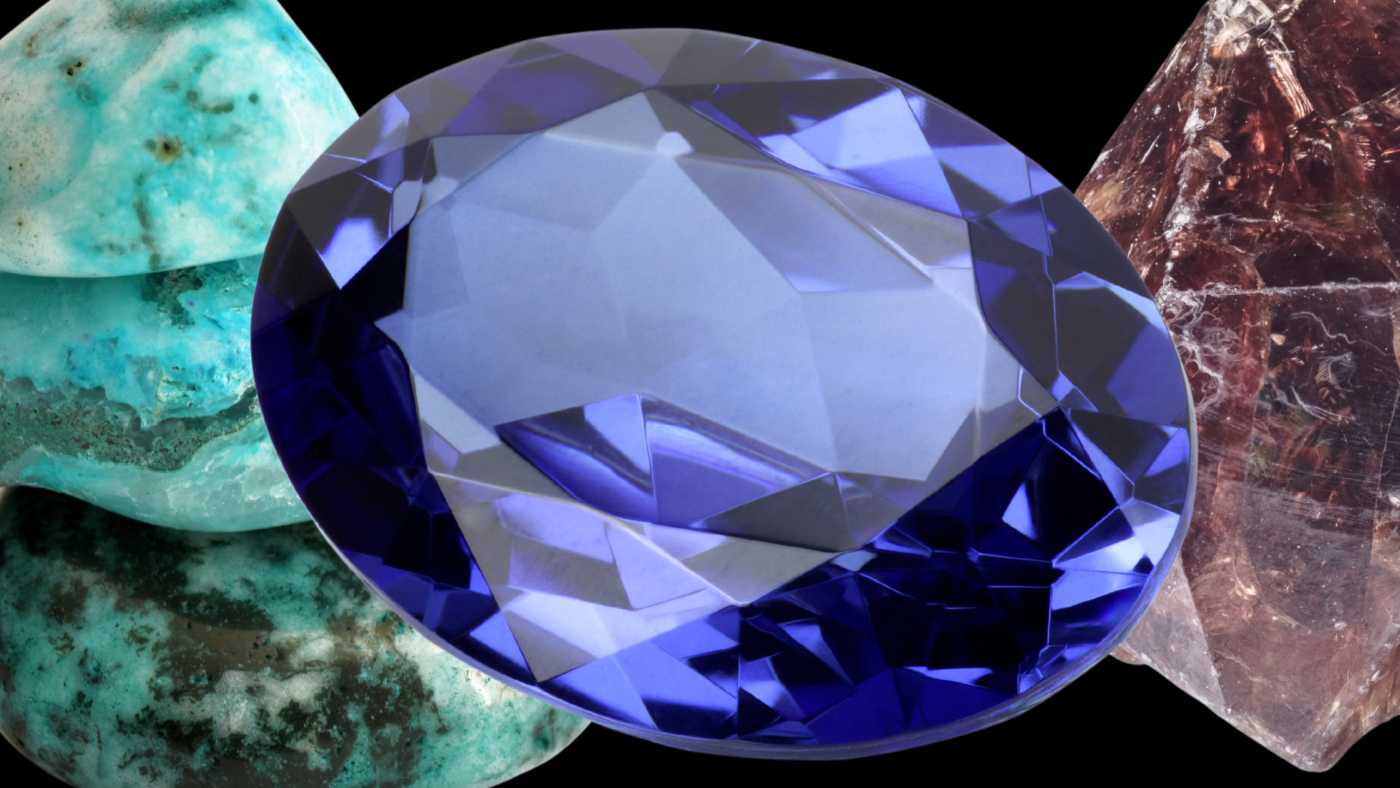December babies, you have the distinct privilege of multiple birthstones to choose from! From the swimmable blues of turquoise to the rich violet-blue tones of tanzanite, your birthstone jewelry can satisfy any style. Read on to learn more about the three beautiful December birthstones: turquoise, tanzanite, and zircon.
The OG December Birthstone: Turquoise

Turquoise may lack the sparkle of your rubies, diamonds, and sapphires, but it’s a unique stone that draws in admirers with its fascinating history, color, and texture. According to GIA, this December birthstone is only found in a few places: “dry and barren regions where acidic, copper-rich groundwater seeps downward and reacts with minerals that contain phosphorus and aluminum.” “Robin’s egg blue” is the most desirable color among jewelers and consumers alike. It varies in color from sky blue to green, depending on the amount of iron and copper it contains.
According to the Smithsonian, “beads made from turquoise dating back to c.5000BCE have been found in Mesopotamia (present-day Iraq), making it one of the first gems to be mined and cut. It is relatively soft and easy to work and can be polished, made into beads, carved, and used for cameos.” Turquoise is porous, which means its color may deteriorate if frequently worn close to the skin.
The Newcomer: Tanzanite

A relatively new discovery, this December birthstone is a blue-violet variety of zoisite. Masai tribesman Ali Juuyawatu is credited with finding the first tanzanite crystal in 1967. Mistaking it as sapphire, he alerted a local fortune hunter named Manuel d’Souza, who quickly registered four mining claims. As its name hints, Tanzanite is mined commercially exclusively in northern Tanzania. While not quite as well-known as the “big 3” (emeralds, sapphires, and rubies), it has rivaled them in popularity. Therefore, powerhouse Tiffany & Co. recognized its potential and made a deal to become its main distributor in the 1960s. To Tiffany & Co., its rise in popularity was a sure thing. After all, a Tiffany vice president told The New York Times in 1969, “Tanzanite is the first transparent deep blue gemstone to be discovered in more than 2,000 years.”
The color of this stone sets it apart. The rich, saturated violet-blue of tanzanite is unparalleled. Its high clarity and potential for large cut stones, along with the help of Tiffany & Co., lead to a boom in popularity during the 1960s and 70s.
Although Tanzanites make great choices for everyday jewelry, they don’t rank as high on the Mohs hardness scale as diamonds or rubies. Consequently, this makes them more delicate. Jewelry designers protect the stones using various methods, such as invisible bezel prongs.
The Wild Card: Zircon
Zircon replaced lapis lazuli as an official December birthstone in 1952. According to GIA, Zircon occurs in an array of colors. The Zircon rainbow includes red, orange, yellow, green, blue, brown, and colorless. Colorless zircon contains brilliance and flashes of multicolored light called “fire.”
Zircon is common in the earth’s crust and is fairly hard, with a Mohs hardness of 7.5. Scientists have determined it is the oldest mineral on earth, dating back 4.4 billion years!
Blue zircon was popular during the Victorian ages and frequently featured in English estate jewelry during the 1880s. While zircon is a popular gemstone among consumers for its range of colors, blue is still a popular choice today!
Looking for the perfect December birthstone piece for the December baby in your life? Shop any of our locations for fabulous gemstone jewelry!

